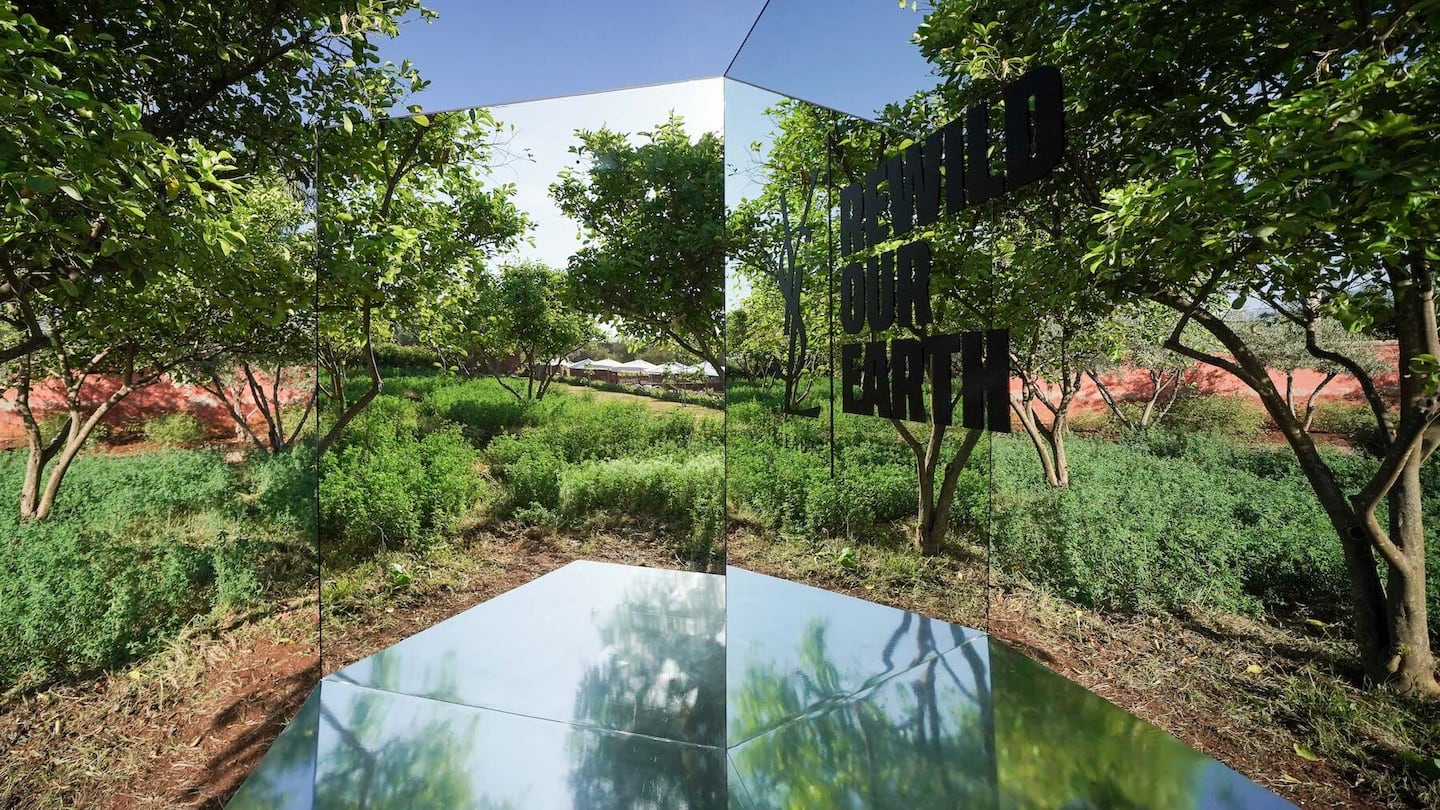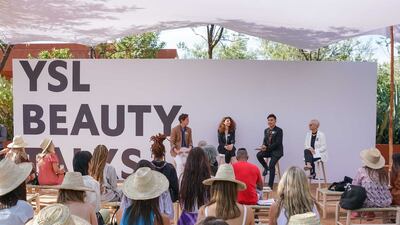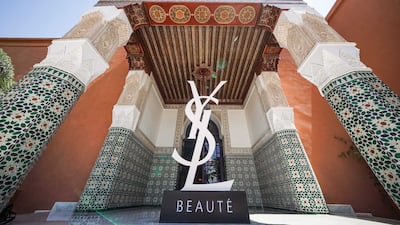
The Business of Fashion
Agenda-setting intelligence, analysis and advice for the global fashion community.

Agenda-setting intelligence, analysis and advice for the global fashion community.

The Yves Saint Laurent (YSL) brand has a celebrated history of challenging the status quo. During his storied career through innovations like Le Smoking in 1966 and the Safari Jacket created two years later, Yves Saint Laurent liberated women, replacing silhouettes that constricted movement with those that enabled it. Casting models like Mounia Orosemane, Amalia Vairelli, Katoucha Niane, Dalma Callado and Iman in his shows in the 1970s and 1980s, he empowered women from traditionally underrepresented ethnicities to see themselves in his brand. Later in Saint Laurent’s career, Naomi Campbell would credit him with securing her first Vogue Paris (now Vogue France) cover.
As a result, Yves Saint Laurent rightly claimed: “J’ai participé à la transformation de mon époque,” translating to “I have participated to the transformation of my era.” Today, that maxim — and the desire to participate in the transformation of our era — is also at the core of the YSL Beauté brand and the international general manager Stephan Bezy’s plans for the company.
“[The YSL Beauté's Ourika Community Gardens] are a long-lasting project. It says a lot about who we are and where we want to go,” says Bezy. “YSL was not built as a brand in nature. But the world has changed. Biodiversity is on the edge. We know millions of species have and will continue to go extinct. If we don’t change the paradigm, we are going to disappear as well.”

Today, the beauty brand is transforming its products and services to drive growth while meeting the needs of its community — and the planet.
“We need to act, and the way for us to act is to not simply stop what we are doing but to transform ourselves and do what we are doing better; to have our own revolution, which is acting seriously on reducing our impact on the planet and to enter more virtuous cycles such as circularity. Biotechnology is going to help a lot. We have some products where the formulation is more than 90 percent natural ingredients,” he continues.
The YSL Beauté brand belongs to the L’Oréal group, which reported sales in excess of €32 billion in 2021. The year before, the company announced its programme “L’Oréal for the Future,” which includes slashing work travel in half, the reduction of waste and water-use, and the adoption of renewable energy in its factories — 58 percent of which are now solely powered by clean, renewable energy. The ambitious programme requires the whole of the L’Oréal group’s product formulations to be 95 percent bio-based ingredients or sourced from abundant mineral sources by 2030, “which is tomorrow,” in the words of Bezy.
“There is also a commitment that by 2030, there will be zero percent virgin plastic used in all L’Oréal products, which is a fierce challenge,” he continues. That ambition is timely. Recycling company TerraCycle estimates that the cosmetics industry generates up to 120 billion units of plastic packaging per year, contributing to the loss of 18 million acres of forest annually, according to the UN’s Food and Agriculture Organization.
In addition to evolving its sourcing strategy, the brand is also looking to innovate how it distributes products to its consumer base. “To my knowledge, in the luxury market, if you look at the big brands in the market, we were among the first to launch rechargeable [products outside of super premium ranges]. We launched Pure Shots serums, where you keep the components and the recharge is in glass, [which is] the only thing you recycle,” says Bezy.
YSL was not built as a brand in nature. But the world has changed. Biodiversity is on the edge.
As to how simple it is to engender this change in consumer behaviour across a vast network of owned and wholesale retail accounts, Bezy is frank but optimistic. “It can be a challenge [to encourage users to adopt a subscription model], but in Japan, for example, where there is traditionally a culture of subscription models, a big part of the business we do is through subscription. In other markets, it is not as ingrained a habit, but we try to educate consumers. For instance, when we launched in China, we wanted to encourage people to change their habits so [that] when consumers buy a full product, they get a recharge [included]. This has a cost, of course, but rather than offering samples, we decided to be fierce and ensure that everyone who buys the product can really understand the benefit of it.”
The benefits of a subscription model extend beyond planetary concerns. “Skincare is a loyalty driving product, just like foundation, and that’s why we put in this programme. Hopefully in just a few years, it will become natural. It is much better for the business because you create faithful customers, and you can resign your subscription at any time,” he explained.
In addition to evolving its operations to reduce its impact on the planet, the beauty brand has utilised and invested in innovative new technology to ensure its formulations and products are more inclusive and uses technology to transform the way in which consumers interact with them.
For instance, after founding the Women of Color Lab in 2014 in its New Jersey research facility, in 2017, L’Oréal’s 4,000-strong research and innovation team conducted studies across North and South America, Europe, Asia and Africa, measuring over 3,000 complexions before and after the application of foundation to build a database of over 9,000 data points.
Employing an algorithm to assess the data, researchers were able to identify six clusters and 18 sub-clusters of skin tones worldwide. The foundation shade ranges were co-created with consumers themselves, reflecting how people actually used products to create their desired complexions, and discovering that using a foundation to balance skin tone was as popular a use-case as complete coverage.

Technology is also driving increased amounts of personalisation elsewhere in the brand’s product offering. Rouge Sur Mesure is a device which uses colour cartridge sets from YSL’s red, nude, orange and fuchsia colour ranges. Created by L’Oréal’s Augmented Beauty Team utilising Perso technology, customers can create thousands of bespoke lipstick shades with a single touch at home, using colour match technology enabled by their smartphones and AI.
Already, the company is extending the number of shades available by expanding the range of cartridges, and although no plans are currently in effect, the opportunity to empower individuals to share their home-designed shades using AR social filters is clear.
At Wild Away, a three-day event hosted by YSL Beauté in Marrakech in May, BoF’s Robin Mellery-Pratt hosted two panel talks at the Ourika Community Gardens, featuring three of the individuals responsible for driving these innovations at YSL Beauté forward: Jaron Chan, global vice president and director of marketing international makeup at YSL Beauté; Micheline El Achkar, head of makeup and research and innovation at L’Oréal Luxe; and Anke Hadasch, global vice president of colour and digital at L’Oréal.
Below, BoF shares key insights from the panellist.
Jaron Chan: We have seen two major shifts take place in the makeup category recently. The first trend is intensely individual self-expression. As face masks have been put down, consumers want colour back in their lives. They want makeup that speaks to them intrinsically — colours that are vibrant and visceral, to live bold and be bold.
Secondly, we’re seeing the “skincarification” of makeup. Now, we are witnessing the hybridisation of the two [skin and make-up categories]. Consumers are telling us they want products to do more. They expect a product that looks good and does good for your face, and are really looking into what’s inside, and [whether] the inside matches the outside. It’s important because it means that there’s a shift in focus, from the viewer to the wearer. How do you as the wearer feel after 10 hours of [wearing] lipstick, or a foundation? How do your lashes feel after wearing Lash Clash mascara, which features Iris Florentina extract from the Ourika Community Gardens to nourish and condition them?
Because of our focus on meaningful innovation, we are obsessed with the details of our formulations. Every single makeup product has an ingredient originating in the gardens: we utilise marigold inside Touche Éclat pens; jasmine inside the new All Hours foundation; iris extract in our Lash Clash mascara. That decision was made by the brand in 2013. Back then, [sustainability] wasn’t a significant trend.
Micheline El Achkar: Today, when we conceive our formulas for Yves Saint Laurent, we have three obsessions. First, we have to be new. Then, to be different. The other major criteria [is that] this newness and difference must be perceived by the consumer. It is not just newness for newness’s sake — consumer perception for us is critical.
Consumers are telling us they want products to do more.
Innovation is our mission. It is our main mission, if not our only mission. We work on details for months, if not years. Innovation is a continuous process. It is ongoing. We do not launch products to launch products — we wait until the performance exceeds our expectations. Through a progressive approach to formulation, we are using more and more bio-based ingredients while we ensure the safety and efficacy, which are our top priorities. We are developing more formulas with more than 90 percent of bio-based ingredients, so we are moving forward, step-by-step, adding bio-based and natural ingredients inside our formulas.
Anke Hadasch: In 2017, we started a worldwide study where we measured the faces of 2,000 women. There is a device called a spectrophotometer, which we use to measure these skin tones. This is really a success story of the back office. Firstly, you must ensure that every device used around the world is calibrated so that the results can be compared, and then, thanks to AI, we could cluster the data points.
It allows us to compare the data of skin tones in countries as diverse as China, Nigeria, the United States, and more. With the importance of inclusivity, there was a real race to launch more and more foundation shades onto the market. […] For us, it was extremely important to have […] not the highest number of shades but the most relevant ones. You need best-in-class colour science to get this right.
When we surveyed 2,000 women from around the world, it was extremely important for us to not only understand what the skin tones of these consumers are, but what their differing makeup strategies were [and] what they want to achieve, so that we can ensure, for any given skin tone, we have the relevant shades for them to achieve what they want. The AI tools we created even take into account the shelf space available in various retailers, so we can ensure the right product is in the right place. Colour science and knowledge is not enough — we have to make sure that we have the right foundations in the right place and in the right combinations. Our mission is to turn our knowledge into innovation and ensure we can bring that innovation to our consumers.
This is a sponsored feature paid for by YSL Beauté as part of a BoF partnership.
This month, BoF Careers provides essential sector insights to help beauty professionals decode the industry’s creative landscape.
The skincare-to-smoothie pipeline arrives.
Puig and Space NK are cashing in on their ability to tap the growth of hot new products, while L’Occitane, Olaplex and The Estée Lauder Companies are discovering how quickly the shine can come off even the biggest brands.
Demand for the drugs has proven insatiable. Shortages have left patients already on the medications searching for their next dose and stymied new starters.